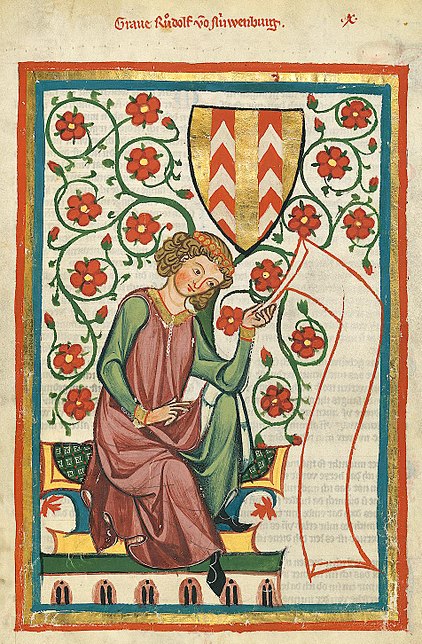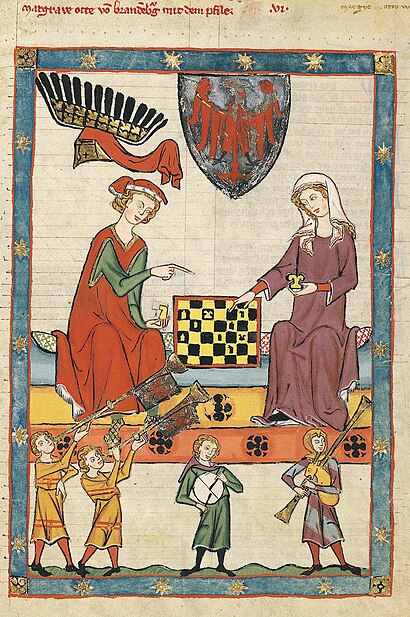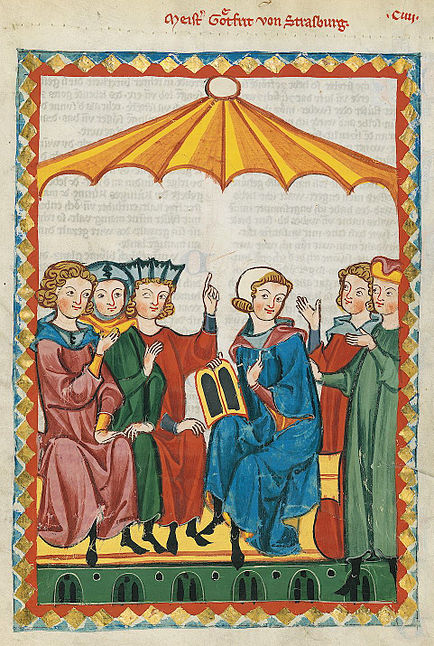
Herr Ulrich von Liechtenstein
[now where have I heard that name before?]
[now where have I heard that name before?]

Meister Heinrich Frauenlob

Herr Kristan von Hamle

Herr Walther von Klingen

Graf Rudolf von Neuenburg

Herzog Heinrich von Breslau

Konradin von Hohenstaufen

Markgraf Otto IV. von Brandenburg

Meister Gottfried von Straßburg

Der Tannhäuser

Herr Goeli

Kristan von Luppin

Herr Friedrich von Hausen
Codex Manesse may well be the quintessential medieval manuscript. The parade of miniatures - gallant knights and comely maidens, chess, backgammon and falconry, jousting tournaments and heraldry, castles and court musicians - feature the types of (near) cliché imagery we all immediately identify with the period.
The manuscript was compiled in the early 1300s at the request of the Manesse family in an attempt to record the major figures of the minnesang - the German tradition of composing and performing love songs, similar to the provincial troubadours of France.
The 137 manuscript illustrations depict 12th and 13th century poets (minnesänger) in scenes reflective of their names or themes from their songs. They mostly came from the nobility - Dukes, Kings and Counts - but sometimes the minnesang included educated members of the middle and lower classes.
The Manesse brothers observed that the bourgeois classes of their time were gaining in power, partly as a result of the 13th century interregnum that had seen much of the authority of the Holy Roman Empire ceded to territorial rulers. New forms of literature - particularly the fables - were replacing the minnesang as the dominant oral and written tradition, so the motivating force behind the production of Codex Manesse was as a means to preserve the history of the declining Germanic troubadour culture. Codex Manesse remains, therefore, the most important primary source document for love songs of the middle ages in middle high German.
- The complete manuscript - 'Cod. Pal. germ. 848 Große Heidelberger Liederhandschrift (Codex Manesse)' - is available from the University of Heidelberg.
- A selection of about seventy miniatures has been posted to Wikimedia (the origin of the images above).
- The wikipedia article on Codex Manesse references a 3-part article (in Portuguese) by R da Costa from 2003 that undertakes an iconographic analysis of the manuscript: one [trans.]; two [trans.]; three [trans.].













